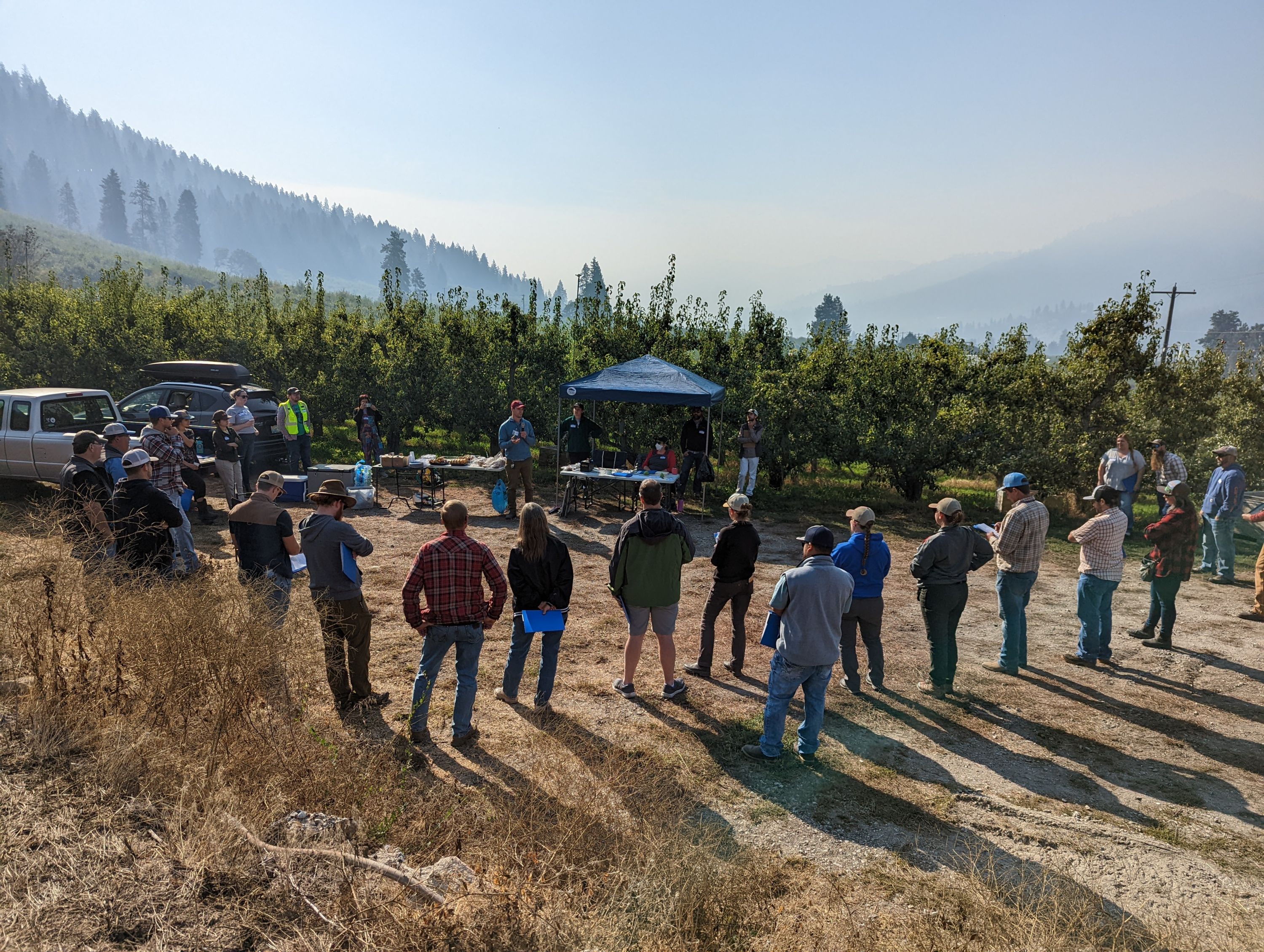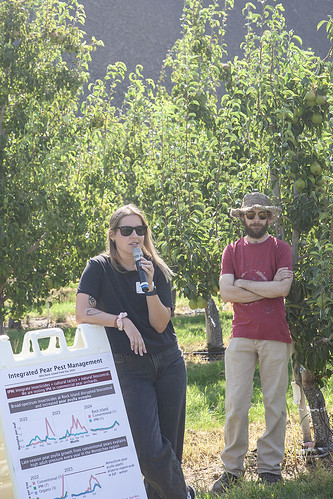Promoting IPM in Wenatchee Valley Pear Production

by Steve Elliott
Western IPM Center
For all the promise, potential and profound benefits integrated pest management can bring, there’s also this harsh reality: IPM only works if people practice it.
In some pear-growing regions in the Pacific Northwest, IPM is a widely accepted, effective and economical way to manage pear psylla and codling moth, the crop’s key insect pests.
But in Washington’s Wenatchee Valley, which produces about 40 percent of the nation’s pears, broad-spectrum, calendar-based insecticide sprays remain the norm. IPM hasn’t been widely adopted, despite the fact that in recent qualitative interviews 80 percent of growers said conventional management practices for pear psylla are not effective and 60 percent said biological control is effective and important.
Molly Sayles, a fourth-year doctoral candidate at Washington State University, conducted those interviews and additional surveys to document growers’ feelings about IPM and identify their roadblocks to adopting IPM practices. With funding from the Western Sustainable Agriculture Research and Education program, and working under mentorship of Drs. Louis Nottingham and Robert Orpet, assistant professors of entomology at WSU, she’s now working to help growers in the valley overcome the roadblocks to adoption – which are plentiful.
“First of all, the Wenatchee Valley has a lot of small pear growers, hundreds of them, and they own relatively small orchards compared to other regions,” Sayles explained. “Medford, Oregon for example, has a few thousand acres of pears, but it’s all pretty much owned by a couple of companies. So just one or two people have to decide, ‘Okay, we're doing it this way,’ and everything is IPM. In the Wenatchee Valley, you have to convince many people.”
The close proximity of many small orchards is another barrier to IPM adoption. In conventional spray programs, growers need to stop applying certain insecticides 30 days before harvest. Because there are few beneficial insects left in the orchards by then due to in-season spraying, psylla numbers blow up unchecked and create huge over-wintering populations that emerge to start the cycle again next spring.
“If you're trying to do an IPM program next to a guy who's doing a conventional program, you get his pest pressure post season and have problems at the beginning of the next season,” Sayles said. “Some growers I've talked to are just like, ‘If my neighbor's not doing it, I'm not doing it because there's no point.’”
Other barriers Sayles has identified: gaps in university Extension and research leadership during the 2000s and 2010s broke momentum with growers, a belief that IPM is either too complex or time consuming, fear of economic harm if it takes a couple years for resident beneficial insect populations to build, and hesitancy to try something seen as risky and new. As barriers, they’re formidable, especially when an areawide IPM program – mating disruption targeting codling moth and phenology-based management of pear psylla across the valley – would be the ideal solution.

But Sayles has hope, and reasons for it.
First is cost. Growers are spending up to $1,500 an acre just in insecticide costs to manage pear psylla conventionally, while others following the university’s IPM recommendations are spending half that or less. And, going back to those initial interviews: growers know conventional management isn’t working well. Ineffective and expensive is motivation to change.
“If you look at the diffusion of innovations theory, one of the important things is that the innovation has to be shown to be better than the status quo, which we think we've done,” she said. “It also really needs to be trial-able. It has to be able to be tested on a small scale, which is what we're trying to do with this project. We’re telling growers, ‘You don't have to do your whole orchard with IPM. Just do one block and we'll scout it for you.’”
Enlisting growers who are using the IPM approach to share their results and experiences is also helping.
“This past year, I've been really focusing on having our early adopters speak to big audiences,” Sayles said. “We've had a lot of panels where people can ask them questions and hear about their experiences. And generally they're honest. I think that that has actually gone a long way.”
Finally, having little to lose may be another factor that promotes adoption, and unfortunately, that may be the reality for many of the valley’s growers in 2024.
“The crop is really, really bad this year. Somebody told me the other day it's the worst crop they've seen since the 1960s,” Sayles said. “There was a zero-degree day in January, a late frost in March and low fruit set – basically, a perfect storm.”
But all that bad news may be what it takes for some growers to give IPM a shot.
“What’s interesting is a lot of people are deciding to try IPM because they're not harvesting anyway,” Sayles said. “They've determined, ‘Okay, I don't want to harvest, it's not worth it. So I'm going to try this while there is less risk of negative repercussions,’ which I really support. I think it’s a great idea.”